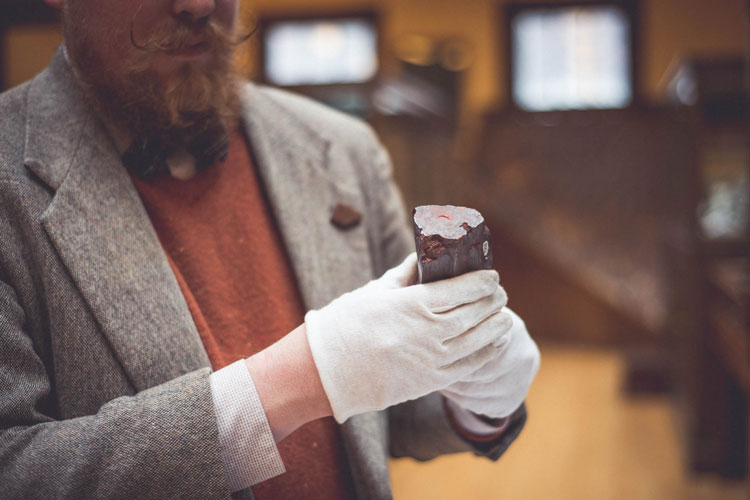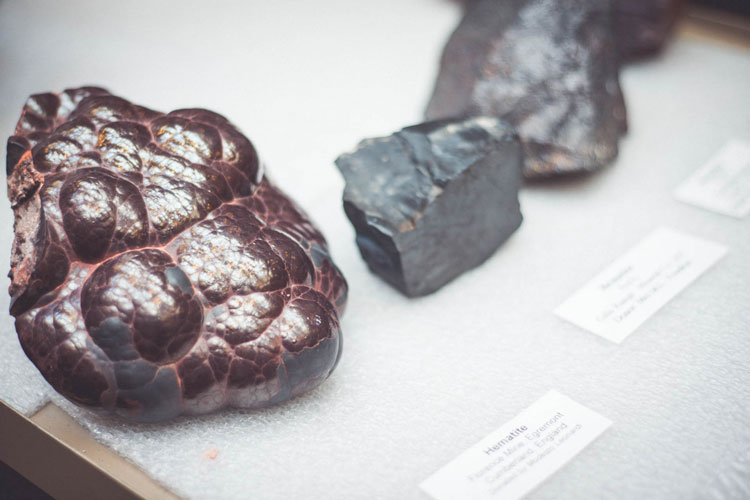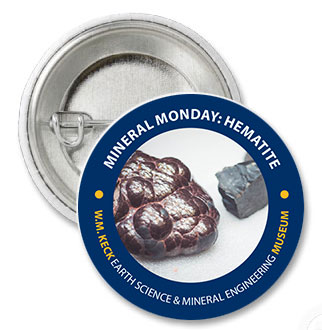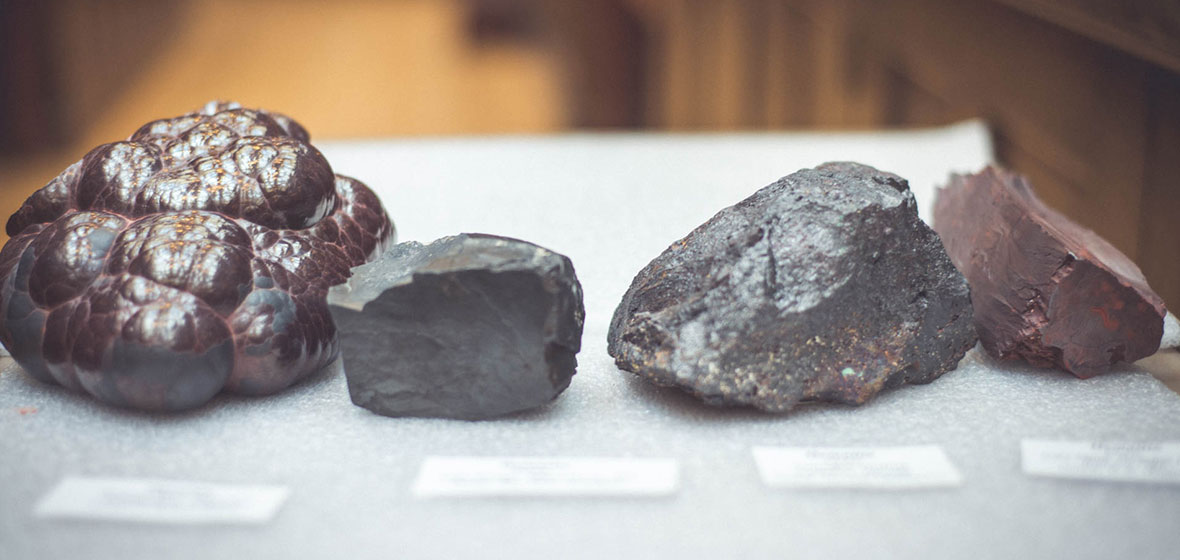The College of Science weekly video series, Mineral Monday, explores the many minerals, fossils and historical objects on display at the W.M. Keck Earth Science and Mineral Engineering Museum, as told by curator Garrett Barmore. While the four objects pictured above may look different, they are all the same mineral. This week, Garrett Barmore brings out the Keck Museum's hematite collection.

Hematite comes in many shapes, including the elongated shape pictured here.

Kidney ore, pictured here, forms this way naturally with the redish brown coloring and the bubbly organ-like shape.

Located in the Mackay School of Mines building at the University of Nevada, Reno, the W.M. Keck Earth Science and Mineral Engineering Museum is open to the public Monday through Friday from 9 a.m. to 4 p.m. and the first Saturday of the month from 12 p.m. - 4 p.m.
The Keck Museum houses an outstanding collection of minerals, ores, fossil specimens and photographs, in addition to mining related relics. The museum is also home to some of the spectacular Mackay Silver Collection, created by Tiffany & Co., for John Mackay and completed in 1878.
Mineral Monday is produced by the College of Science. To receive Mineral Monday in your inbox each week, sign up here.
See you next MIneral Monday!











